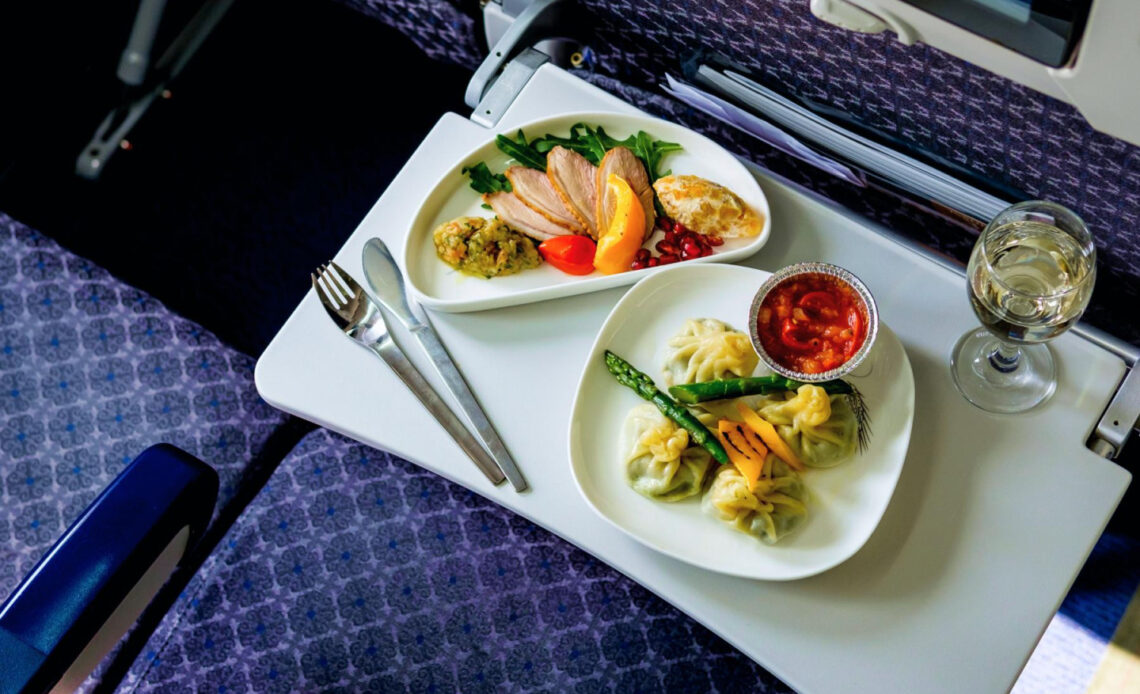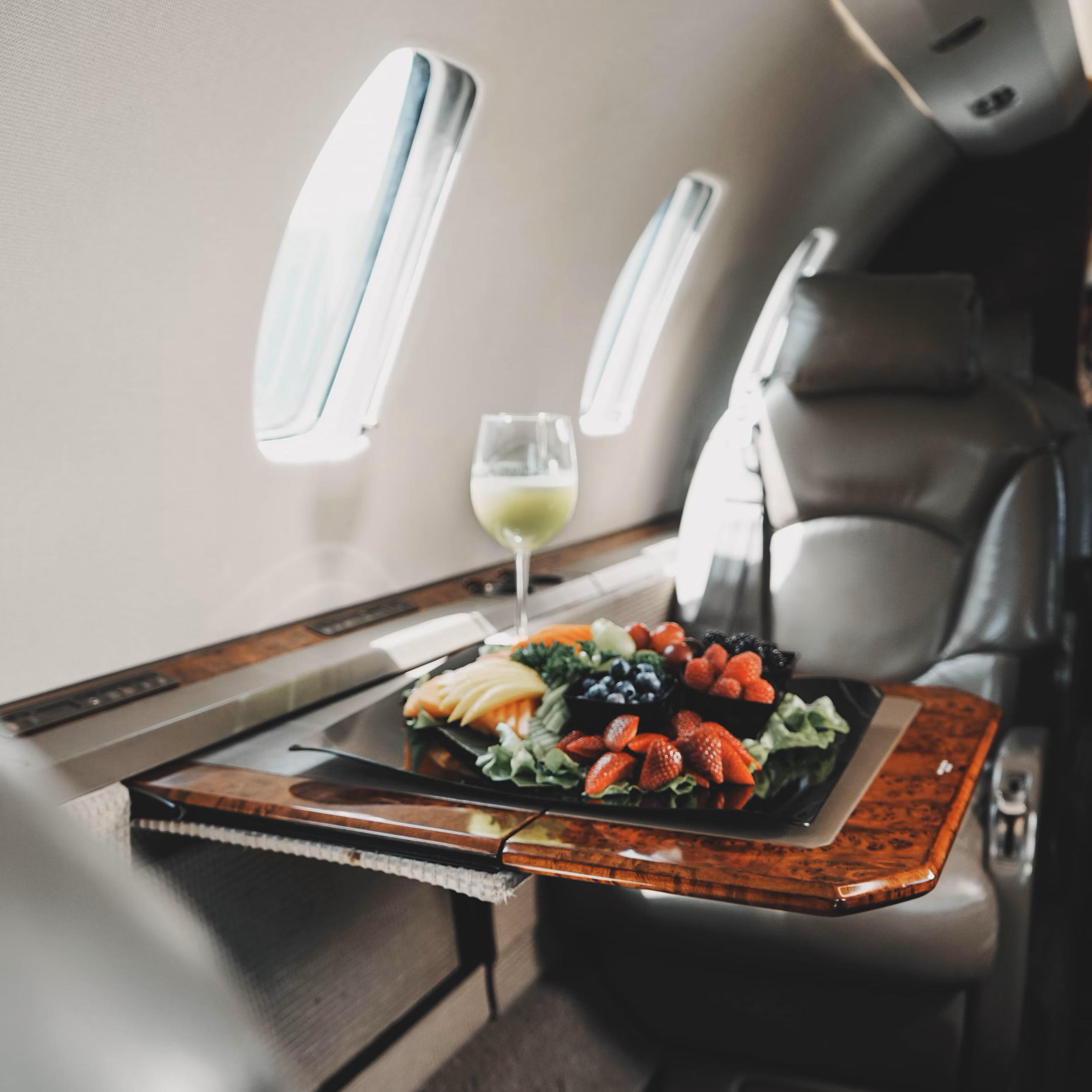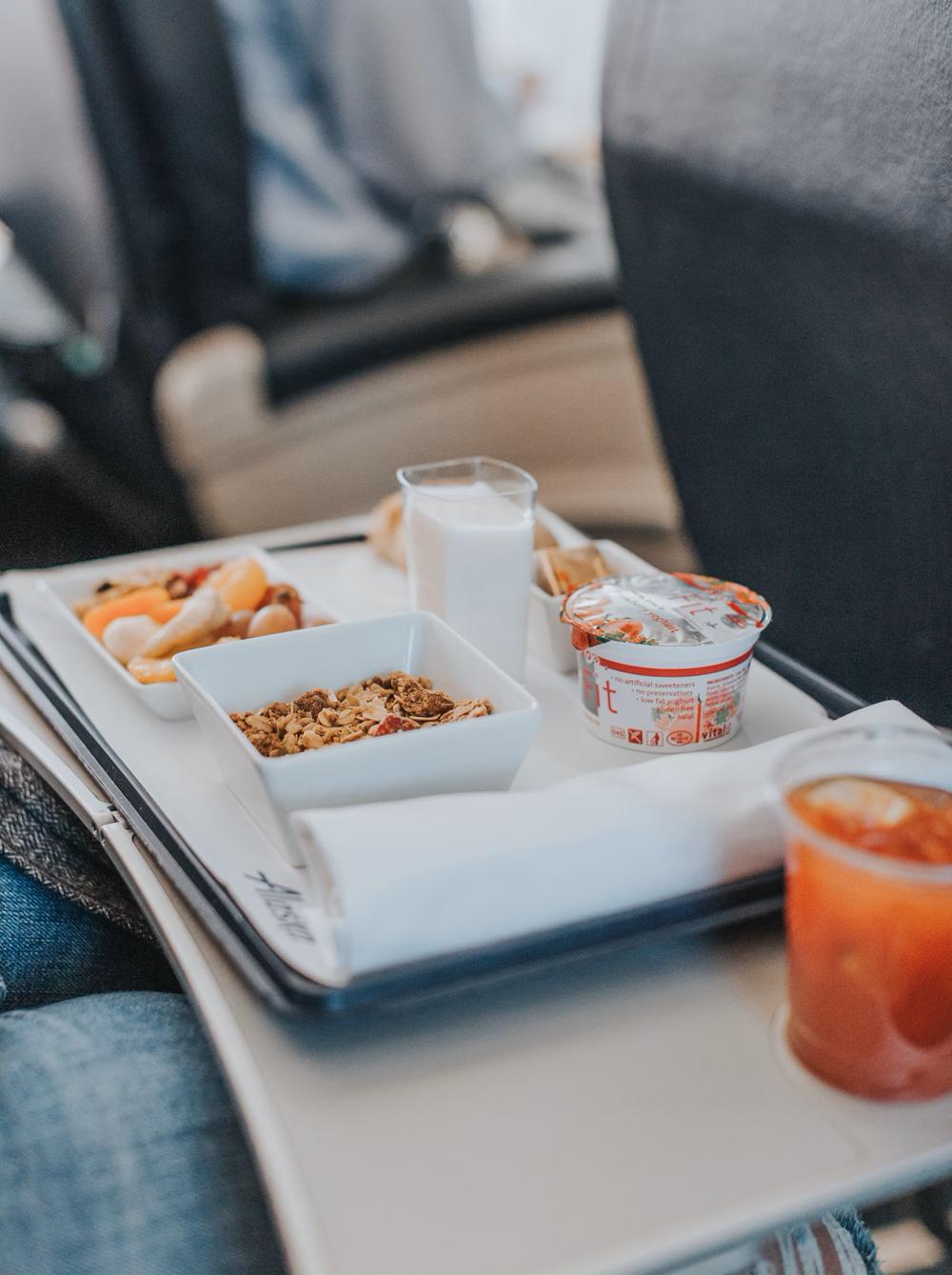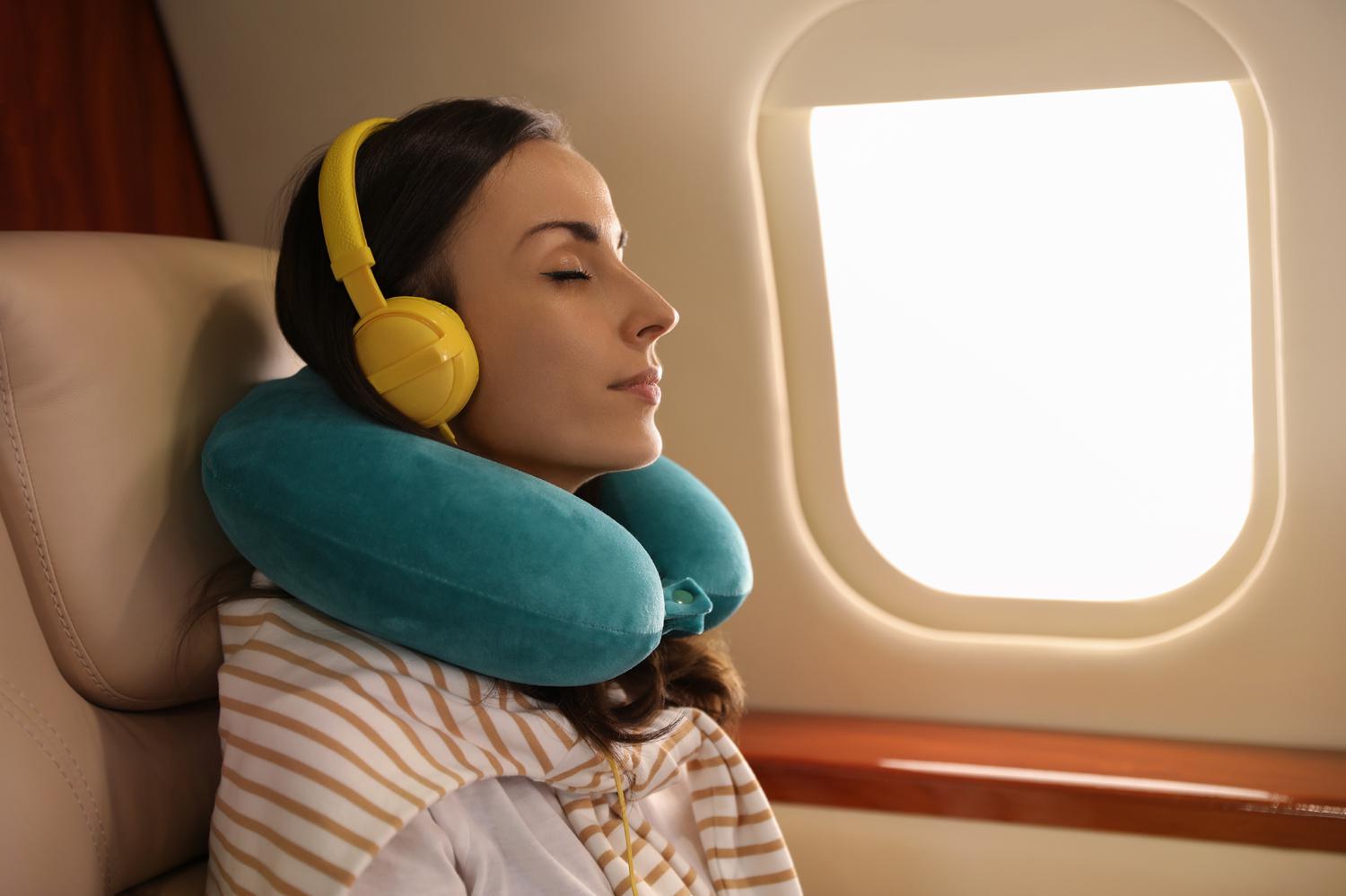
Content:
- What to eat
- Can I take food in my hand luggage?
- What drink
- Is alcohol allowed?
- How to Relax and Cope with Stress on a Plane
What to eat on a plane
It is better to think about the issue of food on the plane in advance. Today, airlines offer various menu options, take a closer look at the menu for passengers on a diet, vegans and vegetarians. In addition, you can often order lactose-free, baby and kosher food on board.
Important: menu preferences must be indicated when purchasing a ticket.
To make the flight comfortable, it is better to order a light meal and limit the consumption of fatty and dairy foods. And you can take snacks on the plane – fruits, nuts.
Please note that dry air and low pressure in an airplane reduce the sensitivity of taste buds. This is why main courses on airline menus often contain a lot of salt and sugar.

Can I take food in my hand luggage on a plane?
Sometimes meals on board are not provided or are not included in the ticket price. It happens that the menu does not meet personal requests, tastes or diet. In such cases, you can take care in advance not to go hungry and take food with you.
If the snack is properly packed, its volume does not exceed the permitted weight of hand luggage, food can be taken on the plane. These can be sandwiches, cookies, dried fruits, nuts, vegetables. The food should be hermetically sealed and not emit strong odors.
If you decide to take drinks, they must be packed in containers no larger than 100 ml, and the total volume must not exceed 1 liter per passenger. That is, you cannot take a thermos of tea with a capacity of 300-500 ml on board.
Important: Before taking food on a plane, check whether it is prohibited by customs regulations or restrictions on hand luggage. For example, most countries prohibit the import of dairy and meat products, the US prohibits vegetables and fruits, and the UAE prohibits any home-cooked food. It is better to eat these products during the flight or not take them with you at all.
Check the rules of the airline you are flying with: many companies allow you to bring a lunch from home, and they can heat it up in the microwave on board.


What to drink on a plane
Due to the dry air in the cabin and sudden changes in atmospheric pressure, the body becomes dehydrated. This will be indicated by symptoms such as dry nose, sore throat and eye irritation. To maintain optimal water balance, a special drinking regime is needed: during the flight, the body requires more liquid than on the ground. It is better to drink pure water, and strong tea, coffee and sweet carbonated drinks should be avoided. They all contain substances that actively remove liquid.
In addition to water, juices can help solve the problem of dehydration. Tomato juice is ideal: it perfectly quenches thirst and helps maintain water-salt balance. Interesting fact: in 2012, Lufthansa ordered a study of the popularity of tomato juice and found out that it serves passengers 200+ thousand liters of the drink per year during flights.
Can you drink alcohol on a plane?
Some people think that a cocktail or glass of wine will help them relax and fall asleep during a long flight. After the hustle and bustle of check-in and boarding, a drink or two seems like a good idea. Or is it?
According to a study published by German scientists in 2023, there are certain risks associated with drinking alcohol on airplanes, especially on long flights.
Here's why it's best to avoid alcohol while flying:
1. Alcohol reduces the level of oxygen in the blood and increases the heart rate.
As the plane gains altitude, the oxygen content in the cabin decreases. This leads to a decrease in the oxygen level in the blood, say scientists from the Institute of Aerospace Medicine (Cologne). They studied the effects of alcohol on the body during a flight and found that the oxygen level in the blood after drinking alcohol on a plane is 85%. And the normal level in healthy people usually exceeds 95%.
In addition, drinking alcohol during a flight increases your heart rate. Thus, the average rate during sleep at normal air pressure increases from 64 beats per minute when sober to 77 beats after drinking alcohol. During a flight, the numbers will increase to 73 and 88 beats per minute, respectively.
Low blood oxygen levels and increased heart rate indicate stress on the cardiovascular system – the heart has to work harder to compensate for the drop in oxygen.
In a healthy person, drinking alcohol can cause dizziness and shortness of breath. And if you have heart or respiratory conditions, such as heart failure, chronic obstructive pulmonary disease, or sleep apnea, you may need medical attention during the flight.
2. Alcohol dehydrates the body
Alcohol causes dehydration of cells, or dehydration. This can sometimes cause thirst and dizziness, but it can also increase the risk of blood clots in the legs or lungs. Dehydration reduces the volume of circulating blood, making it thicker, which causes blood clots. It also increases the risk of stroke and heart attack.
3. Alcohol causes sleep disorders
Alcohol is a sedative, so it often causes drowsiness. Indeed, scientists have proven that after drinking alcohol, the time it takes to fall asleep is reduced (from an average of 12.5 to 19 minutes). But as the body breaks down alcohol during sleep, the quality of rest deteriorates. The fact is that the sleep phases are disrupted, so you will wake up more often and as a result feel less rested.
Alcohol can also relax the muscles in the upper airway, causing snoring and, in people with sleep apnea, making symptoms worse.
How to Relax and Cope with Stress in the Airplane Cabin

If you do not plan to sleep, try to occupy yourself with light mental activity: these can be mobile games on mathematics and logic for a while, puzzles, chess or sudoku, as well as the simplest analog games on logic and counting. This will help reduce the emotional degree by turning on rational thinking.
During panic attacks, you can use relaxation techniques:
- Square breathing: inhale for 4 seconds, hold your breath for 4 seconds, exhale for 4 seconds, hold again, etc. You need to do this exercise until you feel better, a couple of minutes may be enough.
- Grounding technique “5-4-3-2-1”: Name five things you can see right now, four things you can touch, three sounds you can hear, two aromas you can smell, and one thing you can taste.
- Autogenic relaxation training according to Schultz — a set of exercises that allow you to relax different muscle groups. You can listen to it with headphones.
